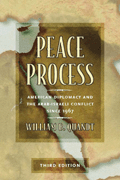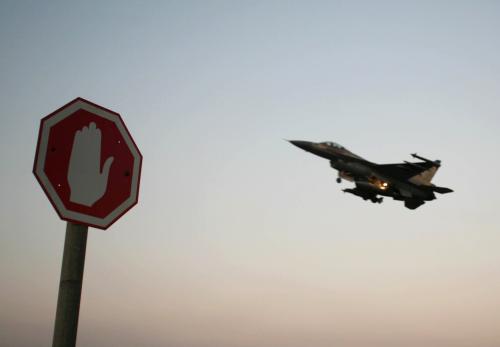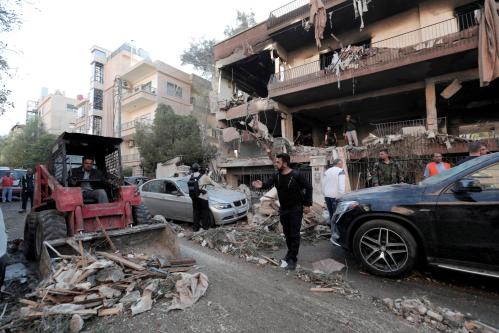Israel’s air attack on a manned Iranian command and control unit in Syria last weekend—and the Syrian shoot-down of an Israeli plane involved in the operation—marked a major escalation in the conflict between Israel and Iran in Syria. For now, things have quieted, with both sides seeming to understand the message the other was conveying. But the prospect for further escalation is higher than ever, and these kinds of Israeli operations in Syria are likely to become the new normal.
What happened?
Last Saturday, an Iranian drone entered Israeli airspace and the Israeli air force shot down the drone. The drone was a copied version of an American stealth drone, manufactured by Lockheed Martin, which was downed in Iran in 2011. The drone was launched from the Tiyas military airbase—also known as the T-4 airbase, near Palmyra, Syria—journeyed through Jordanian airspace, and was shot down by the Israeli air force over Israeli territory, in order to be able to study it.
The incident prompted the Israeli air force to immediately attack Iran’s command and control unit housed at T-4. This was the first time Israel has attacked a manned Iranian base in Syria. During the attack, Syrian air defense managed to shoot down an Israeli aircraft, also for the first time.
 Shortly afterward, the Israeli air force retaliated by attacking a significant portion of Syrian air defenses—reportedly as high as 40 to 50 percent of them—as well as a few Iranian facilities in Syria, for the first time since the outset of the Israel-Lebanon war in 1982. Russia apparently intervened to prevent additional escalation.
Shortly afterward, the Israeli air force retaliated by attacking a significant portion of Syrian air defenses—reportedly as high as 40 to 50 percent of them—as well as a few Iranian facilities in Syria, for the first time since the outset of the Israel-Lebanon war in 1982. Russia apparently intervened to prevent additional escalation.
Conflicting Interests
The incident, while dramatic, comes as no surprise to those following recent events along the Israeli-Syrian border. Israel has been sending messages through all possible channels to Iran, Syria, and Russia that it will not tolerate any kind of Iranian presence and activity along its Syrian border, be it Islamic Revolutionary Guard Corps (IRGC) activity or through proxy militias such as Hezbollah. The Israeli government has issued official warnings, and Israeli Prime Minister Netanyahu has conveyed privately to European leaders—to relay to Tehran—that if a diplomatic solution could not be worked out, Israel would use military means. Netanyahu has also made numerous trips to Moscow, most recently in January, issuing personal appeals to President Putin about Israeli red lines. To supplement these warnings, Israel has attacked numerous unmanned Iranian facilities in Syria in recent months, most notably this past December.
Tehran clearly understood these messages, but has its own set of calculations. Iran has been heavily invested in Syria’s future and is determined to not only preserve the Assad regime, but also to capitalize on its gains. Syria represents Iran’s first significant military success abroad in recent years. The Iranians are intent on establishing military infrastructure—to include permanent bases, airfields, and naval bases, manned mainly by proxies (militias) that are already established in Syria and receive IRGC support, such as Hezbollah. Tehran seeks to exert significant influence in the region—not only over Israel, but also over other Iranian rivals—and control a land corridor that weaves from Tehran to Iraq to northern Syria, ending in the Mediterranean port city of Latakia.
The Iranians have also concluded that since the convoys delivering military supplies to Hezbollah are vulnerable to constant Israeli attacks, they should establish military industry facilities in Syria and Lebanon, where they can manufacture their own components to build precision-guided missiles and rockets, greatly amplifying the strategic threat Israel faces.
Hence the Iranian determination to follow through with this strategy despite their clear understanding of Israel’s red lines. The Iranians feel, and probably for good reason, they can take more risks in Syria than they can in Iran and even Lebanon.
Israel has shown resolve in blocking Iran where possible, and last weekend’s attack is case in point. Israel has opted for action, rather than allowing the situation to fester until it reaches the scale of other strategic threats facing the country—namely the over 100,000 rockets and missiles currently in Hezbollah’s arsenal.
Wider geopolitics at play
Where does Russia fit in? It’s a major player in Syria: While it has positioned itself as an indispensable mediator between the warring sides, it has not prevented the recent escalation, since a low-level conflict serves its goals. Moscow has no interest in a full-scale confrontation between Syria, Iran, and Israel, as such a conflict would endanger recent achievements in Syria. However, a simmering conflict between the parties keeps them distracted and in line, thereby securing Moscow’s growing strategic role in Syria (which is why Moscow tacitly approves certain provocations). But whether Russia can really control the conflict moving forward remains to be seen, and surely serious discussions are underway in Moscow regarding last Saturday’s events.
The United States, for its part, has expressed support of Israel’s right to self-defense and has condemned Iranian activity in the region. But it is not yet clear if Washington intends to do anything further, as America’s strategy in Syria remains opaque. The U.S. stance on Syria matters a lot to Israel, and it might help to define how much freedom of action Israel would have in the future. For now, at least, the United States appears ready to leave Russia in the lead in Syria.
Israel, which in most cases would support a policy of stability, finds itself in a peculiar position: Most of its leverage in Syria comes in its potential for disruption.
Conclusions
Last weekend’s conflagration led to the first shoot-down of an Israeli aircraft in over 35 years. In addition to the tactical success of downing the Israeli jet, Iran and Syria will use this feat for propaganda. In today’s reality of information warfare, such an image indicates a highly meaningful accomplishment.
In attacking a manned Iranian facility in Syria, in broad daylight, while also destroying some 40 percent of Syrian air defense capabilities after its own aircraft was downed, Israel sent a clear message to Tehran, Damascus, and Moscow. These actions prove that Israel is ready and able to couple its warnings with force, to make the other parties pay a real price. Israel, which in most cases would support a policy of stability, finds itself in a peculiar position: Most of its leverage in Syria comes in its potential for disruption.
Thus, last weekend’s Israeli attack is likely not the last, raising the question of whether these escalations represent a new normal in the Syrian conflict. While none of the parties involved have an interest in a full-scale military conflict, the conflict of interests is too fundamental to have been fully resolved. Iran will continue to challenge Israel’s red lines, perhaps by using different means and arenas; Israel will be forced to react, raising the specter of military conflict between the two.










Commentary
Iran and Israel face off in Syria, as if it wasn’t complicated enough
February 13, 2018